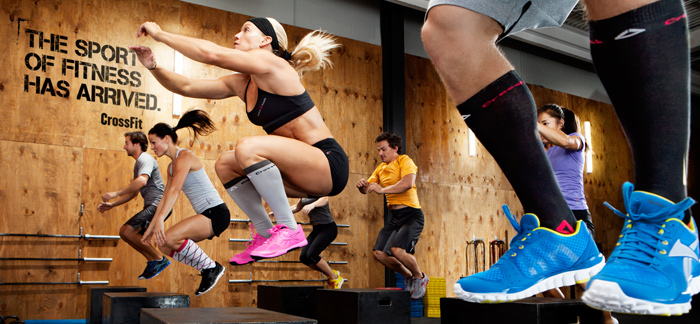.jpg)
The first rule of CrossFit is: you have to talk about CrossFit.
The second rule of CrossFit is: you HAVE TO talk about CrossFit.
Or so it seems to the uninitiated. If you know anyone who’s recently started CrossFit, you’ll know that they just can’t stop themselves from telling everyone else about how it’s changed their lives. It’s a little creepy. Like they just joined a cult of something. They don’t censor their talk of wall balls, jerking, or snatches either. And just don’t get them started on how much burpees suck.
So what’s with that? Why can’t they control themselves? Why keep talking about it? There’s nothing special about starting at a new gym, is there? That’s where you’re wrong. Firstly, it’s not a gym. CrossFit gyms are called boxes. Secondly, the CrossFit experience is significantly different from that of the big franchise style gyms with the big names, complex machinery, treadmills, pools, day-care centres, and coffee bars. What is the CrossFit experience?
What is it?
CrossFit is defined as constantly varied functional movements performed at high intensity. It includes movements from gymnastics, weightlifting, running, and rowing. It is scalable, so whether you’re a top athlete or a beginner, you’ll be able to join. No use trying to use the common excuse: “gotta get fit enough first before trying to do CrossFit”. It provides a combination of lifting heavy loads to strengthen participants, and high intensity interval training and metabolic conditioning to build fitness. The result is a sport - yes, this type of working out is considered a sport - with the goal of building the ultimate athlete always ready and able to do anything physical.
What can you expect when you attend a class?

Sessions follow structured class-like schedules. So depending on the box, your session will contain warming up, strength training, the workout of the day (WOD for short), stretching, or cooling down. This takes place under the watchful eye of a coach. If you’re a relative beginner, the coach will spend more time with you ensuring you do the movements correctly. More seasoned CrossFitters aren’t entirely neglected since the community tends to be one of the most important aspects of the sport. More senior members are always nearby, happy to motivate you through those last few reps, or giving advice on those more technical lifts.
Who does CrossFit?
Since the sport is scalable, it provides a place for anyone to workout, regardless of age, gender, physical fitness, and most other differentiators. The actual programming doesn’t change, the load and intensity does. So, a granny isn’t going to do the same burpees that her 20-year-old grandson does, nor is she going to be expected to do as many, but she’ll be doing a scaled version. Her achievements are considered equivalent to his in the community.
The truly remarkable thing about the environment is that the shouts of motivation and cheers for achievements are equally as loud (if not louder even) for those coming in last as for those supermen and wonder women who finish first. Something about the mutual suffering of surviving a gruelling WOD together builds the sense of community, making it even easier for the addiction to grow.
Why do people hate it?
Critics of CrossFit are as vocal and as prolific as the newbies who can’t stop extolling its virtues. Of all flavours, why must these people choose salty?
Naysayers are critical of weightlifting at high intensities, because often these weightbearing movements result in injury when participants favour speed and neglect proper technique. It’s imperative that coaches focus on technique as a priority, and that all participants are monitored during WODs. Good CrossFit boxes employ multi-talented coaches with experience in many relevant fields - nutrition, physiotherapy, biokinetics, etc. - whose focus is on their clientele improving without injury.
Why do people love it?
Because it works. Because the community keeps them coming back. Because before a WOD, they think they’re never going to be able to do this, and afterwards all they feel is pride for having achieved it. Because it’s better than sitting on that couch with a doughnut. Because it gets us up and moving, and keeps us moving.
Should I do it?
Yes, absolutely yes. Maybe chat to your doctor first if you’re at all concerned, but outside of that, the answer to this question is a resounding YES!
Date Published: 25 January 2018